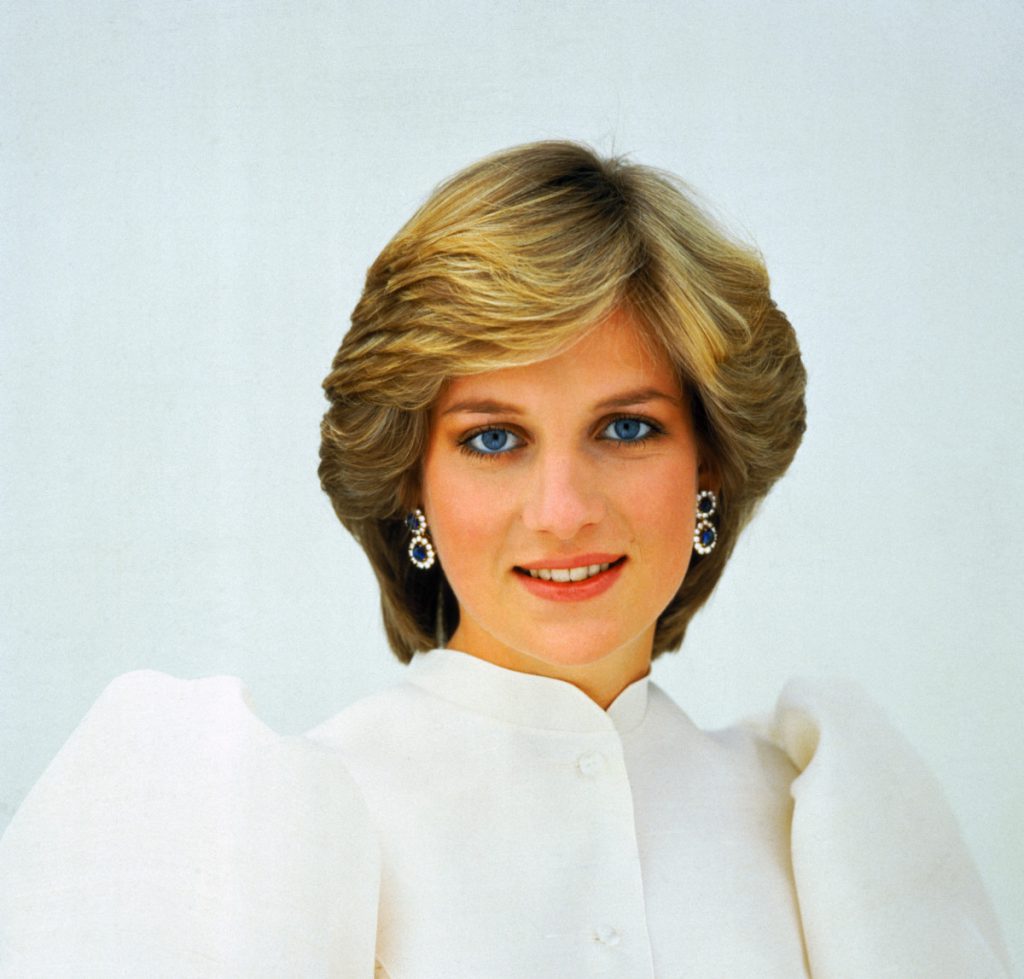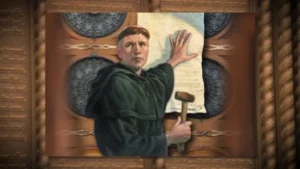Winner of the Fall 2019 StMU History Media Award for
Best Article in the Category of “People”
Two million people are cheering her name, 750 million eyes are upon her. She’s smoothing out her silk, ivory colored wedding dress embroidered with pearls and mother-of-pearl sequins. She is being transported to St. Paul’s Cathedral by five military police officers in a fairytale-like coach. Keeping her composure, she steps out of the stagecoach in her Cinderella-like wedding slippers. She walks up the steps of the Cathedral, head held high, the Spencer family tiara decorating her gorgeous short, blonde hair. As she enters the dome, all eyes are drawn to her glowing, innocent features and the twenty-five-foot train trailing behind; the opening song is played by one of the three orchestras that her fiancé has chosen. The date is July 29, 1981, marking the wedding of Prince Charles to Lady Diana. Diana knew that becoming Princess of Wales was going to be a great responsibility, one that couldn’t be taken lightly. She strongly believed it was either going to be a fairy-tale dream come true or a total nightmare; either way, it was too late that day for her to change her mind.1

Charles was absent for a lot of the first year of their marriage: he tended to his royal duties, participated in shooting, polo, and painting pictures. He lived a comfortable, no strings attached life with Diana that first year. Once, he even admitted to his past liaisons with some married women. They were deemed a “safer choice” because they would keep quiet—due to having families and husbands. Charles assumed Diana would fit perfectly into his lifestyle like a missing puzzle piece. This was not the case, as Diana and he had very different forms of entertainment and pastimes; there was also a rather large age gap of fourteen years.3 During their engagement, when Diana was nineteen and Charles was thirty-three, Prince Charles received a package. Diana, already suspecting Charles was hiding something, found a gold bracelet addressed to ex-lover Camila Parker-Bowles with the initials “F” and “G” intertwined; the initials were of the nicknames they had given to each other.4 “This was about two weeks before we got married…. So rage, rage, rage! ‘Why can’t you be honest with me?’ But, no, [Prince Charles] cut me absolutely dead.”5 Charles denied the accusations, making her feel paranoid and leaving her with second thoughts about marriage. Diana claimed she had considered canceling the wedding, discussing the situation with her two sisters, both responding with “your face is on the tea-towels so you’re too late to chicken out now.”6

The public viewed the wedding with a lot of admiration, so much that it blindsided them. The public was completely unaware that Diana could not handle the public scrutiny; her face was on every magazine cover and she was all the media talked about. Princess Diana was portrayed as calm and very put-together; she carried herself in a way that didn’t expose her weaknesses. This was the very mindset of the royal family, any form of unwanted exposure was immediately hidden or covered up, and she learned this a little too late. The wedding that was perceived as “a ceremony that bore the weight of centuries of national tradition” had a tragic story behind it.7
Diana would frequently visit the kitchen where she would participate in binge eating behaviors, such as eating endless bowls of ice cream and special snacks at request. Staff and friends were concerned about Diana’s dietary habits; she was so thin despite consistently raiding the fridge and eating excessive amounts of food in one sitting. Although they would frequently see her overindulge in food, Diana would make herself throw up five to six times a day. Diana claimed that her disorder was first triggered because of a comment Prince Charles made.8 “My husband put his hand on my waistline and said, ‘Oh, a bit chubby here, aren’t we?’ and that triggered off something in me—and the Camilla thing, I was desperate…. I remember the first time I made myself sick.”9

Diana started slipping into the deep end; her first pregnancy was tough on her body. Apart from morning sickness, Diana suffered from bulimia. Bulimia nervosa is characterized by recurrent episodes of binge eating followed by compensatory behaviors to prevent weight gain by self-induced vomiting, fasting, or excessive exercise. The onset of bulimia nervosa can be due to stressful life events and usually develops between adolescence and early adulthood. There is an increase in depressive symptoms and depressive disorders in affected individuals as well as a higher suicide risk. Mood disturbance begins at the same time or during the development of the eating disorder, but in other individuals, predates the illness.10
Diana became desperate; she would run around with a lemon knife. Diana knew something was wrong with her but didn’t know how else to ask for help. When she did reach out for help, Charles thought Diana was crying wolf and dismissed her threats. Charles became alarmed and overwhelmed by Diana’s frequent mood swings, her consistent crying, and obsession with his old mistress, Camilla Parker Bowles. He believed that she was being immature and seeking attention, so instead of helping his wife, he went riding on the Sandringham estate. Diana almost felt challenged by his response, so at two months pregnant, Diana placed herself at the top of a wooden staircase in Sandringham and threw herself down the stairs.11 “Very, very difficult pregnancy indeed. Sick the whole time, bulimia and morning sickness…. I didn’t know which way to turn at all…. Charles said I was crying wolf and I said I felt so desperate, and I was crying my eyes out, and he said, ‘I’m not going to listen. You’re always doing this to me. I’m going riding now.’ So I threw myself down the stairs.”12
Some could claim that Diana was immature and naive and in reality, she was just a child. Diana had just become a young adult when they were married; she still had an illusion of a perfect marriage, one that wouldn’t suffer from difficulties. Her mindset was heavily influenced by her childhood; Diana’s parents’ troubled marriage and their frequent fights, even after their divorce. She didn’t want her marriage to end up like her parents. Diana believed that a Royal marriage would complete the pretty picture she painted in her head, it couldn’t possibly be any less than perfect—after all, that is what she had read in novels.13
At this point, Diana knew that she wasn’t going to get what she wanted or what she needed: stability and compassion. Instead, she was being scorned and her feelings were minimized. “I was thrown into the deep end,” she said of royal life. “Nobody ever helped me at all.” This incident was one of many cries for help during their first year of marriage.14
Diana made several other threats to her life; she began engaging in self-mutilation. In one incident Diana threw herself against a glass display cabinet at Kensington Palace and shortly after, slashed her wrists with a razor blade. Even during an argument with Prince Charles, she picked up a penknife and cut her chest and thighs.15 Still, Diana kept up a happy-go-lucky persona for the public and continued her duties as Princess of Wales. In the midst of a troubled time, she grew and matured; she found herself. Even if Charles solely wanted to please his parents by marrying Diana when his heart belonged to someone else, she was beloved by so many and the public saw her as one of their own. Diana was one of the only Royals that didn’t make the masses feel like less than they are.16 She was able to find herself through the volunteer work she engaged with and by connecting to the public.17
Diana was perceived as having it all, being the “It Girl” only to be revealed that within those palace walls, she was living a nightmare.
- Anne Matheson, “A Day of Splendour and Romance,” Australian Women’s Weekly (2018): 48. ↵
- Barbara Cartland, “Royal Marriage: When Life isn’t a Romantic Novel,” Newsweek 120 (1992): 72. ↵
- A Biographical Encyclopedia, 2002, s.v. “Women in World History,” 591. ↵
- Andrew Morton, Diana: Her True Story (New York: Pocket Books, 1992), 90. ↵
- Andrew Morton, “Diana’s Secret Tapes,” People 88 (2017): 88. ↵
- Andrew Morton, Diana: Her True Story (New York: Pocket Books, 1992), 91. ↵
- Barbara Cartland, “Royal Marriage: When Life isn’t a Romantic Novel,” Newsweek 120 (1992): 72. ↵
- Andrew Morton,Diana: Her True Story (New York: Pocket Books, 1992), 96. ↵
- Andrew Morton, “Diana’s Secret Tapes,” People 88 (2017): 88. ↵
- American Psychiatric Association, Diagnostic and Statistical Manual of Mental Disorders Fifth Edition (Arlington, VA: American Psychiatric Association, 2013), 345-347. ↵
- Andrew Morton, Diana: Her True Story (New York: Pocket Books, 1992), 104-105. ↵
- Andrew Morton, “Diana’s Secret Tapes,” People 88 (2017): 88. ↵
- Barbara Cartland, “Royal Marriage: When Life isn’t a Romantic Novel,” Newsweek 120 (1992): 72. ↵
- Andrew Morton, “Diana’s Secret Tapes,” People 88 (2017): 88. ↵
- Andrew Morton, Diana: Her True Story (New York: Pocket Books, 1992), 105. ↵
- Martha Duffy, “Fractured Fairy Tale,” Time Magazine 147 (1996): 60. ↵
- Encyclopedia of World Biography, 2004, s.v. “Diana Princess of Whales,” 531. ↵



102 comments
Alexander Avina
This was a great article. I didn’t know too much about Princess Diana because she was a little before my time. It sounds like she was an amazing human being and she did a lot to help others. Her story is truly amazing and inspiring. It is sad to think that such a beautiful person would have to die so young. Before reading this article, I was only aware of the death of Princess Diana. This article gave me new insight into her background and amazing personality.
Emmanuel Diaz
Great article and very great wording as well. especially at the end. I have heard of Princess Diana but I did not know the full story. Just a brief summary but this leaves me speechless. Poor girl wanted to live in a fantasy but all she recieved was a nightmare… but that there was her own downfall as well. She expected fantasy and disregarded reality. It is very sad to hear how over the years price charles would break her down mentally and emotionally and bring deception as well. Its very sad to read about the damage she would bring and the pain she would cause herself for her cries for help. Royalty is not always what we think it is.
Courtney Pena
I lack education on the royal family, so this article was able to provide me with more information on Princess Diana. The only thing I knew about her was that she died in a car accident but I had no idea that her life was miserable. She always made sure to look fine in front of the public but in reality, she would try to harm herself by throwing herself against glass and by forcing herself to throw up. I wonder how the public treats Prince Charles after finding out the suffering that he caused Princess Diana.
Nicole Ortiz
I had known about Princess Diana but i never knew this about her. It’s crazy to see how even those that are royalty deal with these kind of mental disorders as well, it just goes to show they they’re human as well. It was sad to read everything that she went through and dealt with, especially how she tried to harm herself during her first pregnancy. I feel like if she hadn’t died, she would have made such an impact on the world as the years went by.
Sydney Hardeman
Wow this was a very informative and interesting article. I knew that Princess Diana had lived through some tough times and her life was not perfect, but reading this article about her life made me realize just how crazy and tragic her life actually was. It just goes to show that even those in the royal family can be going through some depressive times. One thing that I did not know was how she self mutilated and threw herself against glass.
Shea Slusser
I did not know much about Princess Diana prior to reading this article, but its so sad and alarming to hear this story. I respect her so much for always having the pressure to look good for the public but yet have a terrible personal life. Im sure the royal family is filled with political situations like this one, and its so sad to know she went to such great extents to get her point across to her husband. Tragic story but very interesting.
Michael Thompson
Wow, she really did have a tragic life. One would think that being a princess would be anything anyone would ever do, but for Princess Diana it was a nightmare, who was neglected and judged constantly not only by the public, who still did love her, but also her husband, who was to supposed to support her, but said she was lying. She obviously had mental health issues, and she needed help, but with her role, ironically that was probably one of the few things she couldn’t get.
Samantha Bonillas
I cannot imagine what it is like to be a part of the royal family. I feel like what is put out there for the public to see is “picture perfect” while in reality their lives are messy. Princess Diana’s marriage with Charles must have been hard for her, especially because she, in a sense, “stuck it out”. She was such a brave, wonderful soul that has been a part of the royal family and it’s saddening that throughout her marriage, she lost herself and was practically by herself.
Addie Piatz
I’d heard about Princess Diana in the past but it was just small things on magazines, I really didn’t know anything much deeper than that until now. After reading this I think Diana was a wonderful individual and an extremely strong one at that. I don’t think I could do what she did. I gained so much respect for her reading how she put on a smile for the public eye. It must have been so hard for her.
Audrey Uribe
She always had a spotlight shining on her marriage. That kind of stress can really hinder any relationship, especially one where love is not being reciprocated just like this one for instance. It breaks my heart to read how lonely she felt and her attempts of self inflicted pain. Such an amazing woman destroyed by royalty and public appearances. May she rest in peace.